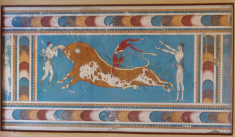Speaker
Description
Recently Nanoplasmonic Laser Induced Fusion Experiments were proposed, as an improvement in achieving laser driven fusion [1]. This combines recent discoveries in heavy-ion collisions and optics. The existence of detonations with time-like normal on space-time hyper-surfaces combined with absorption adjustment using nanoantennas allows the possibility of heating the target in an opposing laser beam setup [2]. Here we will present particle-in-cell model of such colliding beam setups, also showing a kinetic model of resonant nanoantennas using the capabiliteis of the EPOCH multi-component PIC code[3].
[1] L.P. Csernai, N. Kroó, & I. Papp, Radiation-Dominated Implosion with
Nano-Plasmonics, Laser and Particle Beams 36, 171-178 (2018).
[2] L.P. Csernai, M. Csete, I.N. Mishustin, A. Motornenko, I. Papp, L.M.
Satarov, H. Stöcker & N. Kroó, Radiation-Dominated Implosion with Flat
Target, Physics and Wave Phenomena, 28 (3) 187-199 (2020) in press,
accepted February 3, 2020, (arXiv:1903.10896v3).
[3] T. D. Arber, et. al. Contemporary particle-in-cell approach to laser-plasma
modelling Plasma Phys. Control. Fusion 57, 113001 (2015)
Details
István Papp, PhD, Wigner Research Centre for Physics, Budapest, Hungary, https://wigner.hu/en
| Is this abstract from experiment? | No |
|---|---|
| Name of experiment and experimental site | NAPLIFE project, http://csernai.no/naplife/ |
| Is the speaker for that presentation defined? | Yes |
| Internet talk | No |
